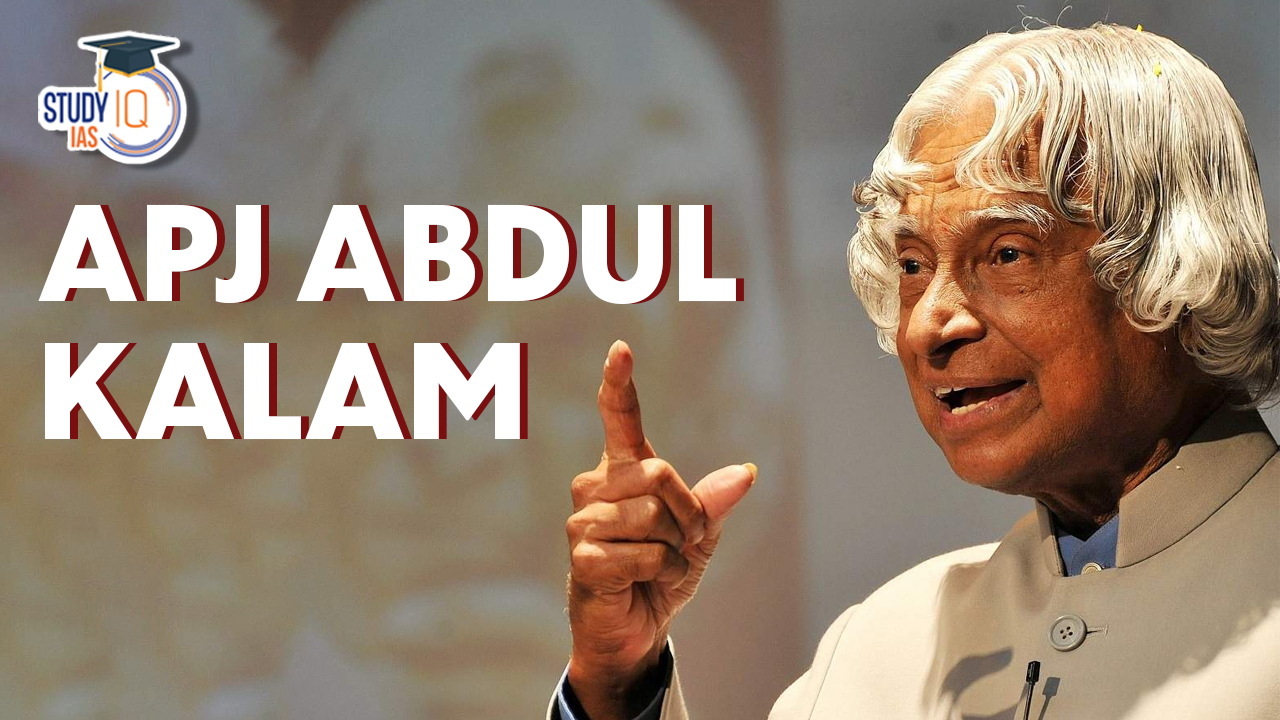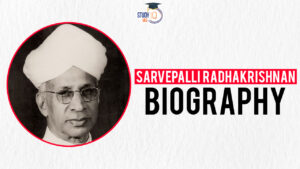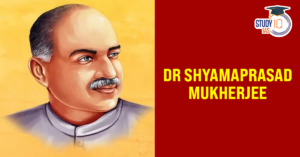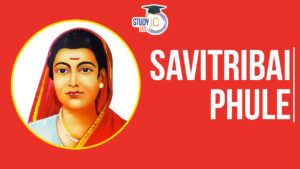Table of Contents
Dr. APJ Abdul Kalam, fondly known as the Missile Man of India, was born on October 15, 1931. His immense contribution to India’s space and missile programs made him a beloved figure, especially among the youth. Recognizing his efforts to inspire and mentor students, the United Nations declared his birthday as World Students’ Day, celebrated globally to honor the role of education in shaping the future. Check Out APJ Abdul Kalam’s Death Anniversary 2024, Biography, and Achievements in this article.
Dr. APJ Abdul Kalam’s Birthday
Dr. APJ Abdul Kalam, born on October 15, 1931, is fondly remembered as the Missile Man of India for his pivotal role in advancing India’s missile and space programs. His dedication to science, education, and youth empowerment left an indelible mark on the nation.
In honor of his immense contributions to education, his birthday is celebrated globally as World Students’ Day, emphasizing his belief in the power of young minds to shape the future. Dr. Kalam’s legacy continues to inspire generations, encouraging them to dream big and work towards building a better world.
Biography of APJ Abdul Kalam
APJ Abdul Kalam, full name is Avul Pakir Jainulabdeen Abdul Kalam, was an accomplished scientist who later became India’s 11th president from 2002 to 2007. Over the course of more than 40 years, Kalam worked mostly for the Indian Space Research Organisation (ISRO) and the Defence Research and Development Organisation (DRDO) as a scientist and administrator. He had a direct connection to India’s efforts to develop military missiles and a civilian space programme.
He was given the moniker “The Missile Man of India” for his efforts on ballistic missile development and launch vehicle technology. He had a significant part in Pokhran-II Nuclear Test in 1998.
| About APJ Abdul Kalam | |
|---|---|
| Full Name | Avul Pakir Jainulabdeen Abdul Kalam |
| Date of Birth | October 15, 1931 |
| Place of Birth | Rameswaram, Tamil Nadu, India |
| Date of Death | July 27, 2015 |
| Education | Aerospace Engineering, Madras Institute of Technology |
| Notable Roles | Scientist, 11th President of India (2002-2007) |
| Major Contributions | Missile development (Agni, Prithvi), space programs (SLV, PSLV, GSLV), Pokhran-II nuclear tests |
| Vision | Vision 2020: Transform India into a developed nation by 2020 |
| Awards & Honors | Padma Bhushan (1981), Padma Vibhushan (1990), Bharat Ratna (1997), and many honorary degrees |
| Post-Presidency Work | Educator, motivational speaker, World Student Day (October 15) |
He was chosen as the nation’s 11th president in 2002 and quickly earned the moniker “People’s President.” Following his stint as president, he focused on doing what he enjoyed most: teaching, writing, and reading. He received India’s highest civilian honour, the “Bharat Ratan Award,” for his scientific accomplishments and contributions.
On July 27, 2015, while giving a lecture at the Indian Institute of Management (IIM) Shillong, he departed for the celestial home. He was buried with full state honours, and hundreds of people, including national officials, attended his funeral.
APJ Abdul Kalam and Early Life
On October 15, 1931, in the pilgrimage town of Rameswaram, Tamil Nadu, APJ Abdul Kalam was born into a low-income Tamil Muslim family. His father, Jainulabdeen, was a boat owner and the local mosque’s imam, while his mother, Ashiamma, was a stay-at-home mom. With four older brothers and a sister, he was the youngest member of the family.
Despite the family’s limited financial resources, all of the kids were reared in a loving, compassionate environment. Kalam had to sell newspapers during his formative years in order to supplement the family’s income.
He was an average student at school, but he worked extremely hard and had a strong desire to study. He adored mathematics and devoted countless hours to its study. He continued his study after graduating from “Schwartz Higher Secondary School,” and in 1954 he received his degree from “Saint Joseph’s College, Tiruchirappalli.” He aspired to be a fighter pilot, but there were only eight spots available in the IAF, and he was only able to secure the ninth spot.
A P J Abdul Kalam’s Educational Background
Kalam put in a lot of effort and had a strong desire to study, despite receiving ordinary grades in school. He put a lot of effort into his studies and had become particularly interested in mathematics. Following completion of his primary schooling, Kalam enrolled at Saint Joseph’s College in Tiruchirapalli before leaving for Schwartz Higher Secondary School. 1954 saw his physics graduation from Saint Joseph’s College. To pursue his studies at the Madras Institute of Technology in aerospace engineering, he relocated to Madras in 1955.
APJ Abdul Kalam: Missile Man of India
After earning a degree in aeronautical engineering from the Madras Institute of Technology, Kalam began working for the Defence Research and Development Organisation (DRDO) in 1958. As the SLV-III, the nation’s first satellite launch vehicle, project director, he joined the Indian Space Research Organisation in 1969. He managed a programme that produced several successful missiles when he returned to the DRDO in 1982, giving him the nickname “Missile Man of India.”
A P J Abdul Kalam’s as Scientist
He received his degree from the “Madras Institute of Technology” in 1960 and, after joining the “Defence Research and Development Service,” began working as a scientist at the “Aeronautical Development Establishment.” While he was a member of the “INCOSPAR” committee, Vikram Sarabhai, a renowned space scientist, was also a mentor to Kalam. In 1969, Kalam was moved to the ‘Indian Space Research Organisation (ISRO)’. He was appointed to lead the SLV-III project, the nation’s premier satellite launch vehicle. Under Kalam’s direction, SLV-III successfully launched the ‘Rohini’ satellite into a low-Earth orbit in July 1980.
In 1970, Kalam took part in several projects, including “Project Devil.” Although the project did not work out, it did lay the groundwork for the 1980 creation of the “Prithvi Missile.” He was connected to “Project Valiant” as well. Kalam rejoined DRDO as its director in 1983 after being asked to oversee the “Integrated Guided Missile Development Programme” (IGMDP).
He was important for India’s ‘Porkhran-II’ nuclear tests in May 1998. Kalam became a national hero as a result of the success of these nuclear tests, and his popularity soared. He provided various ideas as a technical visionary in the areas of technology advancements, agriculture, and nuclear energy to make India a developed country by 2020.
A P J Abdul Kalam’s as President
The National Democratic Alliance (NDA), the party in power, nominated Kalam as its presidential nominee in 2002, and he went on to win the election. He was inaugurated as India’s 11th President on July 25, 2002, and held office through July 25, 2007. He also became the third Indian President to be awarded the “Bharat Ratna” prior to taking office.
He earned a moniker called “The People’s President” because of his approach to work and interactions with regular people, particularly young people. The most difficult choice Dr. Kalam made during his administration was to sign the “Office of Profit Bill,” according to him.’
He received criticism for his inaction in deciding the outcome of mercy petitions that were filed to him when he was President. He only responded to one of the 21 requests for mercy. He advocated for president’s rule in Bihar in 2005, which was also a contentious choice.
APJ Abdul Kalam Awards and Achievement
Kalam won a number of awards during his lifetime. He received the “Padma Bhusan,” the third-highest civilian distinction bestowed by the Republic of India, in 1981. The second-highest civilian accolade bestowed upon the Republic of India was the Padma Vibhushan, which was given to him in 1990. The coveted “Bharat Ratan,” “Padma Vibhushan,” and “Padma Bhushan” awards from the Indian government were given to Kalam. In 1997, the Indian government presented him with the “Indira Gandhi Award for National Integration.”
| Year | Degree | Institution |
| 1994 | Distinguished Fellow | Institute of Directors, India |
| 1995 | Honorary Fellow | National Academy of Medical Sciences |
| 2007 | Honorary Doctorate of Science | University of Wolverhampton, UK |
| 2007 | King Charles II Medal | UK |
| 2008 | Honorary Doctorate of Engineering | Nanyang Technological University, Singapore |
| 2009 | International Von Karman Wings Award | California Institute of Technology, USA |
| 2009 | Hoover Medal | American Society of Mechanical Engineers, USA |
| 2010 | Doctor of Engineering | University of Waterloo, Canada |
| 2011 | IEEE Honorary Membership | Institute of Electrical and Electronics Engineers, USA |
| 2012 | Honorary Doctors of Law | Simon Fraser University, Canada |
| 2014 | Honorary Doctors of Science | University of Edinburgh, Scotland |
He was the recipient of Veer Savarkar Award. In 2000, he was bestowed with ‘Ramanujan Award’ by the ‘Alwars Research Centre.’ In 2007, he received the ‘King Charles II Medal’ from the Royal Society. The ASME Foundation, USA, honoured Kalam with the Hoover Medal. He also received honorary doctorates from 40 universities. The United Nations recognized Kalam’s 79th birthday as World Students’ Day. In 2003 and 2006, he was nominated for the ‘MTV Youth Icon of the Year.’
Awards of APJ Abdul Kalam
| Year | Award | Organization |
| 1981 | Padma Bhushan | Government of India |
| 1990 | Padma Vibhushan | Government of India |
| 1997 | Bharat Ratna | Government of India |
| 1997 | Indira Gandhi Award for National Integration | Government of India |
| 1998 | Veer Savarkar Award | Government of India |
| 2000 | SASTRA Ramanjun Prize | Shanmugha Arts, Science, Technology & Research Academy |
| 2013 | Von Braun Award | National Space Society |
APJ Abdul Kalam Books
Several educational and motivational books, such as:
- “Wings of Fire” (1999) – An autobiography detailing his early life, career, and work in Indian space research and missile programs.
- “India 2020: A Vision for the New Millennium” (1998) – A roadmap for India’s development and transformation into a developed nation by 2020.
- “Ignited Minds: Unleashing the Power within India” (2002) – Focuses on motivating and inspiring the youth of India.
- Mission India: A Vision for Indian Youth (2005) – Emphasizes the role of the youth in achieving a developed India.
- Indomitable Spirit (2006) – A collection of lectures and thoughts that reflect his vision and ideas.
- Inspiring Thoughts (2007) – A compilation of his quotes and thoughts on various topics.
- Turning Points: A Journey through Challenges (2012) – A sequel to “Wings of Fire,” highlighting key moments in his life.
- Target 3 Billion: Innovative Solutions Towards Sustainable Development (2011) – Discusses sustainable development and rural development in India.
- The Scientific Indian: A Twenty-First Century Guide to the World Around Us (2010) – Co-authored with Y.S. Rajan, it explores various scientific developments and their implications.
- My Journey: Transforming Dreams into Actions (2013) – A recount of his personal experiences and insights.
- Reignited: Scientific Pathways to a Brighter Future (2015) – Co-authored with Srijan Pal Singh, it aims to inspire young minds towards science and technology.
APJ Abdul Kalam and Youth
When Kalam’s death pleaded with him to continue doing what he had devoted his life to doing—sharing knowledge—destiny was seen as being gracious. As he breathed his last, Kalam did what he loved most and was surrounded by the people he cared about most—youth. His life ended up serving as a role model for the nation’s youth. Due to his modesty, his straightforward and laid-back demeanour, and his capacity to engage young minds, he became a role model and an inspiration for the younger generation.
APJ Abdul Kalam’s Legacy
Dr. APJ Abdul Kalam’s legacy is profound and multifaceted. As the “Missile Man,” he advanced India’s missile and space programs, significantly enhancing national security and technological prowess. His visionary “Vision 2020” aimed to transform India into a developed nation. During his presidency, he was celebrated for his humility and focus on youth empowerment.
Post-presidency, he inspired millions through his educational initiatives and interactions with students, with October 15 celebrated as World Student Day. Known for his ethical values and simplicity, Kalam’s impact endures in India’s scientific achievements, educational reforms, and national pride, symbolized by APJ Abdul Kalam Island.


 Dr. Sarvepalli Radhakrishnan Biography, ...
Dr. Sarvepalli Radhakrishnan Biography, ...
 Dr. Shyama Prasad Mukherjee Biography, L...
Dr. Shyama Prasad Mukherjee Biography, L...
 Savitribai Phule Biography, Early Life, ...
Savitribai Phule Biography, Early Life, ...





















